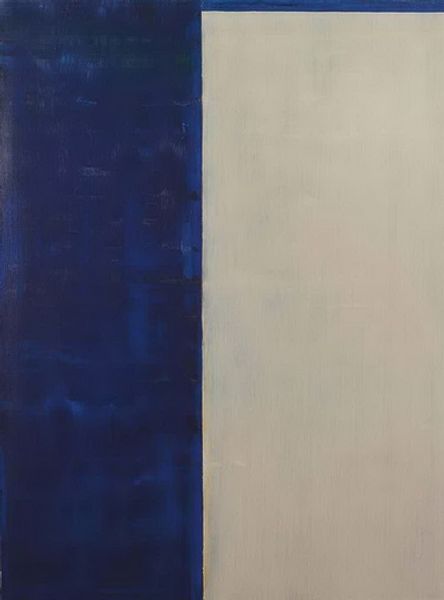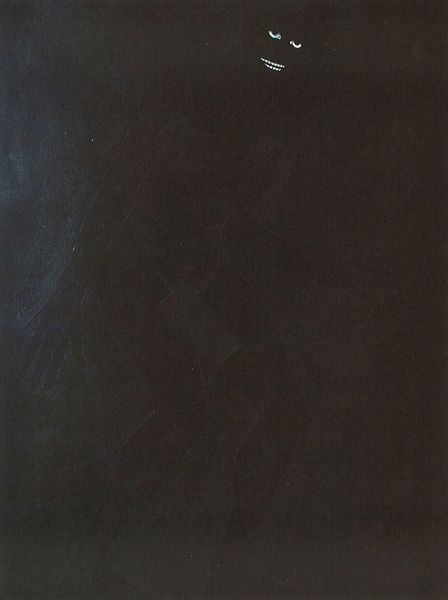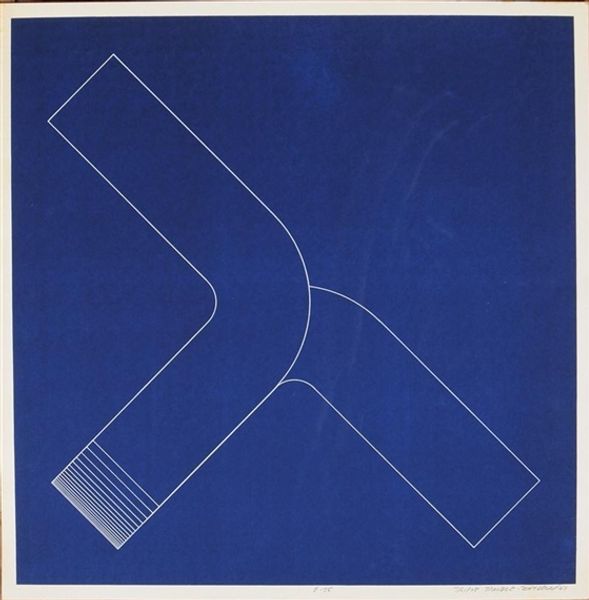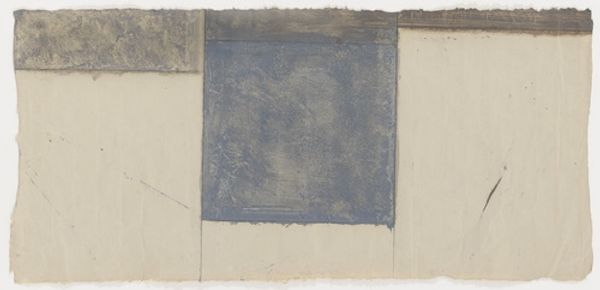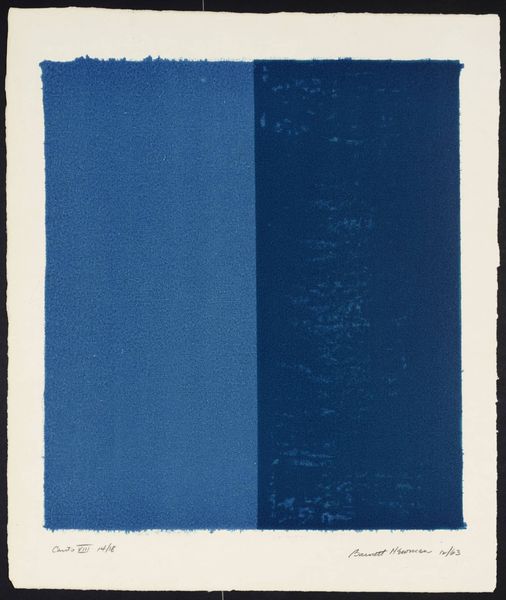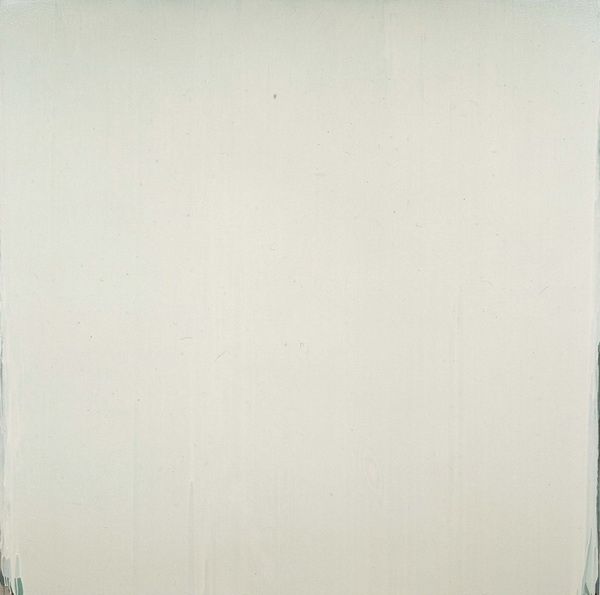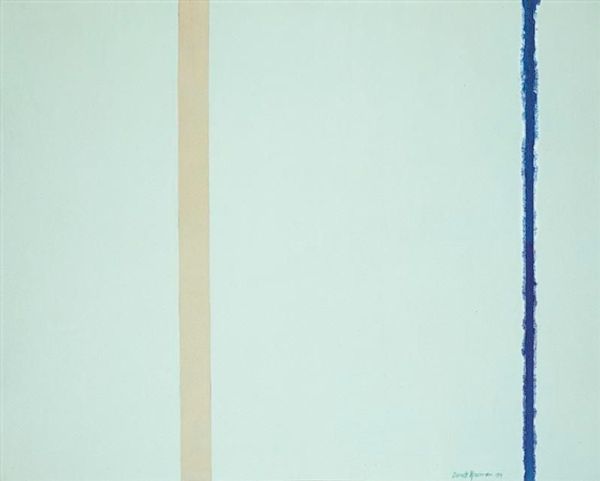
acrylic-paint
#
abstract-expressionism
#
abstract expressionism
#
paint
#
acrylic
#
rough brush stroke
#
acrylic-paint
#
painted
#
geometric-abstraction
#
line
Copyright: Jean Degottex,Fair Use
Editor: This is "UNHL BLEU II, 4 -70" by Jean Degottex. It appears to be an acrylic painting in a single shade of deep blue. It’s incredibly minimal, with just a hint of geometric form emerging from the monochrome. What do you see in this piece? Curator: I see a powerful statement about reduction and intention. The single color demands we confront our assumptions about art. In the late '60s and early '70s, artists were questioning everything. Degottex is engaging with the legacy of minimalist and monochrome painters like Yves Klein. It's not just about what's there, but about what's *not* there. Does the arrow feel like an invitation or an indictment, to you? Editor: An invitation, I think. To look closer and consider what is usually left unsaid or unseen. Do you see a political dimension in that reduction? Curator: Absolutely. Consider the political context of the time. This paring down could be interpreted as a reaction against the spectacle of consumer culture, a visual form of protest. Or a deliberate stripping away of visual clutter to expose fundamental structures. By limiting his palette, Degottex forces the viewer to confront the basic elements of art, potentially paralleling movements that aimed to dismantle societal structures. Editor: That makes sense. It's more than just a blue painting; it’s a question. Curator: Precisely! A challenge to the viewer to engage critically with both art and the world. And the silkscreen aspect allows us to think about art's reproducibility, and about accessibility to wider audiences. Editor: I didn’t expect such a simple work to spark so many ideas. Curator: That’s the beauty of art! It reflects and refracts the complexities of the society from which it emerges, even—or perhaps especially—when it appears deceptively simple.
Comments
No comments
Be the first to comment and join the conversation on the ultimate creative platform.





